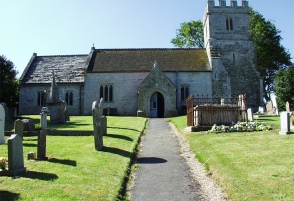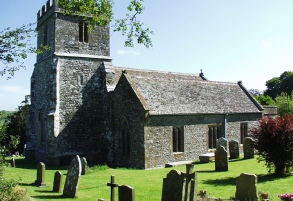CHALDON HERRING PC



Recorded history, however, only notes the momentous, not the normal; the ordinary.
It records the exceptional, whether by wealth, power or talent.
Chaldon Herring is an outstanding example of small ordinary rural settlement in southern England. It seems always to have been of and about, the land; typical of its day; mostly poor but supporting an indigenous population, which rises or falls somewhat as the rural economy fluctuates.
It must have been amongst the first places inhabited by prehistoric man after the end of the ice age. The earliest evidence of occupation lies in the barrows on Chaldon Down, dated at circa 5,500 BC. [there were mesolithic finds in buried soil beneath excavated barrows.]
In the bronze age -
The Romans came, living in Lulworth and Wool and dropping sherds of pottery at Vicarage Bottom and near the boundary between West Chaldon and Holworth,
In the "Dark Ages" ie between the Romans and the Norman Conquest, the village was part of the demense of King Harold in the Saxon kingdom of Wessex.
From the Domesday Book [1086] onward there are continuos records of land ownership and local population. For almost three hundred years Bindon Abbey held title to much of the land; various Norman nobles tenanting the rest.
From the mid-
In the mid-
Nothing very notewotthy seems to have occurred over the centuries; landlords came and went, or died and succeeded, population drifted up and down; a school was built [finally] in 1847 and closed in 1932. But at the turn of the century, in 1904, the writer, Theodore Powys, settled in the village, later marrying a local woman, raising a family, and over the next twenty years bringing a tide of creative people to visit, some to live, in the village.
So the village is now noted for its association with the Powys family, Sylvia Townsend Warner and Valentine Ackland, Elizabeth and Hope Muntz, Andre Bonnamy, Stephen Tomalin, David Garnett and even, peripherally, T E Lawrence and Augustus John.
After the second world war the changes in the village reflect those of English rural society as a whole,. Increased mechanisation leading to fewer farm workers, drift to local towns for employment, gradual influx of newcomers entering village life, until now there are only three families in the parish whose roots go back several generations in this place,
And yet the place seems very durable; wholly recognisable to a ghost from 500 years ago, though perhaps not to our mesolithic forebears.
Truthfully, history comprises all of time past.